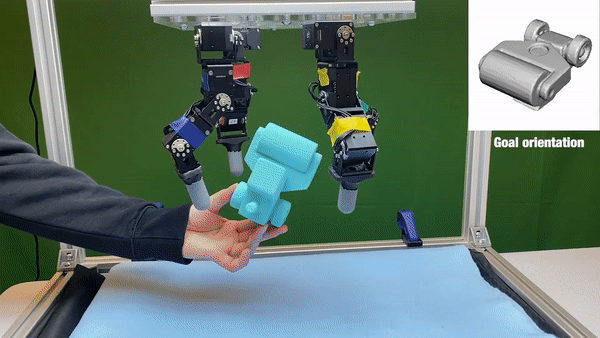This AI Research from MIT and Meta AI Unveils an Innovative and Affordable Controller for Advanced Real-Time In-Hand Object Reorientation in Robotics
Researchers from MIT and Meta AI have developed an object reorientation controller that can utilize a single depth camera to reorient diverse shapes of objects in real-time. The challenge addressed by this development is the need for a versatile and efficient object manipulation system that can generalize to new conditions without requiring a consistent pose of key points across objects. The platform can also extend beyond object reorientation to other dexterous manipulation tasks, with opportunities for further improvement highlighted for future research.
The current methods used in object reorientation research have limitations, such as focusing on specific objects, having a limited range and slow manipulation, relying on costly sensors, and only producing simulation outcomes. These methods must effectively address challenges in transferring from simulation to real-world scenarios. Success rates are often determined by error thresholds, which vary depending on the task. The student vision policy network has been trained to address these limitations and has demonstrated minimal generalization gaps across datasets.
This study presents a method to enhance robotic hand dexterity by addressing the challenge of in-hand object reorientation. Previous approaches have imposed constraints and required expensive sensors, limiting their versatility. To overcome these limitations, a controller was trained through reinforcement learning in simulation and successfully demonstrated real-world generalization to new shapes. The challenges of training controllers with visual inputs and achieving effective sim-to-real transfer were also discussed.
The proposed method involves utilizing reinforcement learning to train a vision-based object reorientation controller in simulation and then deploying it directly in the real world for zero-shot transfer. The training uses a convolutional network with enhanced capacity and a gated recurrent unit in a table-top setup using the Isaac Gym physics simulator. The reward function incorporates success criteria and additional shaping terms. To evaluate the method’s effectiveness, testing is conducted on both 3D-printed and real-world objects, with simulation and real-world results compared based on error distribution and success rates within defined thresholds.
The single controller trained in simulation to reorient 150 objects was successfully deployed in the real world on both three-fingered and modified four-fingered D’Claw manipulators. Real-time performance at 12 Hz was achieved using a standard workstation. The evaluation, which employed an OptiTrack motion capture system, showcased its accurate object reorientation and ability to generalize to new object shapes. The analysis of error distribution and success rates within defined thresholds demonstrated the system’s effectiveness in addressing sim-to-real transfer challenges and potential precision enhancements without additional assumptions.
In conclusion, the study successfully developed a real-time controller through reinforcement learning that can effectively reorient objects in the real world. Although the system’s median reorientation time is around seven seconds, it raises questions about the importance of shape information in reorientation tasks. It highlights the challenges of transferring simulation results to the real world. Despite these challenges, the controller has potential applications in in-hand dexterous manipulation, particularly in less structured environments, and emphasizes the need for precision improvements without additional assumptions.
A potential avenue for future research is to explore how incorporating shape features can improve the performance of a controller, particularly in terms of precise manipulation and generalization to new shapes. It may be worth investigating the use of visual inputs for training, which could address the limitations of current reinforcement learning controllers that rely on full-state information simulation. Finally, comparative studies with prior works could help contextualize the findings in the existing literature, and dexterous manipulation using open-source hardware warrants further investigation.
Check out the Paper, Project and Github. All credit for this research goes to the researchers of this project. Also, don’t forget to join our 33k+ ML SubReddit, 41k+ Facebook Community, Discord Channel, and Email Newsletter, where we share the latest AI research news, cool AI projects, and more.
If you like our work, you will love our newsletter..
![]()
Hello, My name is Adnan Hassan. I am a consulting intern at Marktechpost and soon to be a management trainee at American Express. I am currently pursuing a dual degree at the Indian Institute of Technology, Kharagpur. I am passionate about technology and want to create new products that make a difference.
Credit: Source link


Comments are closed.